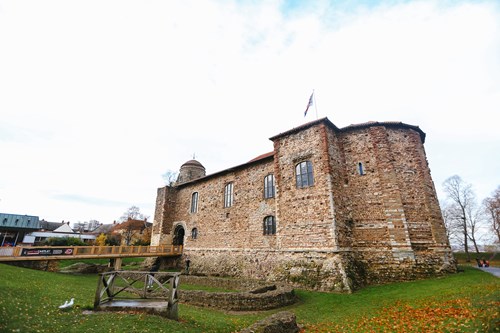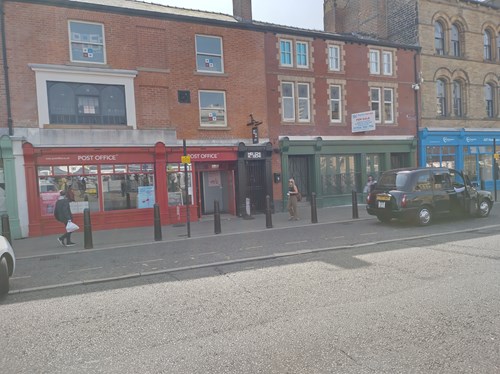Building place identity through heritage

In his first blog for the IPM, Dr. Michael Sewell, explores UK heritage in the context of place-making and management.
Michael joined IPM as a Research Associate in January this year and specialises in History, Heritage and Place. Before that, Michael completed a PhD focused around the city of Colchester and its development since the early 18th Century.
__
Heritage is central to place development and place identity and has recently become part of the government’s long-term strategy for towns. This is welcome news, but we need to grasp the concept, role and future of heritage and history, and what this means for our towns. From festivals, to traditions, the natural landscape to the built environment, heritage comes in many shapes and sizes and can be utilized for the benefit of community and people.
Sadly, this has not always been fully realised. Town planners from the 1950s (arguably, even earlier) began the modernisation of our towns up and down the nation. New shopping centres, wider roads and urban design led to a complete reshaping of our towns. Heritage was forgotten, assets were left abandoned or disconnected and trust within places diminished as homogenous paternalism and modernity took centre stage.
Heritage has, historically, been used to create, maintain, and transform local identity in place. We must reverse the decisions and damage that has been inflicted on places since the post-war period if we are to build local pride, and heritage is a great starting point. Historically, people have always found meaning, whether that be, emotional, social, religious, or political in the landscape around them, it connects us together and builds trust and community.
Our heritage sites provide economic, environmental, and social benefits. They are educational tools, provide jobs and benefit our wellbeing. Our understanding of heritage needs to encompass a wide range of thoughts and scopes. For example, this is a ripe time for historians to be actively involved in their places, to help tell the stories of the areas where they live. We need to understand our places; the stories and meanings held within the landscape, and the complexities of our built heritage allow us to engage with these issues.
Some places have actively engaged with heritage, in its various forms, to build relations, community and identity. They show that heritage is a useful asset in place marketing, community identity, drivers of footfall, and local pride.
Building an identity through heritage: Colchester
Colchester is a city which has cemented its identity through the historic fabric of the town. Although this began in the nineteenth century, the redevelopment of the landscape in the post-war period removed most of the historic heritage in the centre. Shopping centres and newer developments instead took the place of heritage. In doing so, Colchester lost its unique image and parts of its story.
In recent times, there has been an active engagement to reconnect with the historic aspect of the city. This has involved rebranding the town logo, ensuring heritage is owned locally, developing a strong marketing strategy around the historic sites, and holding regular history events. This has led to the slogan ‘Britain’s First City’ being actively promoted around the city and online.
There has also been attempts to repurpose old historic sites such as the Jumbo water tower. This was originally built in the later part of the nineteenth century but became disused in late twentieth century. It had become an iconic image of the town as it towered over the high street but was also derelict and had negative connotations. In recent years, it has been repurposed and is being transformed into a restaurant. The link between history, heritage and modern uses needs to be at the centre of place transformation.

Unique events and stories: Medway
Each of our places is different and have an opportunity to tell unique and fascinating stories. One example of this is in Medway where the Anglo-Dutch Wars are commemorated every year through a series of displays. Towns in the area celebrated the event of the 1667 raid on the Medway and ensured that links were made with the Dutch government. In doing so, the town turned a local event global, ensuring that this was a story which made them stand out..
Historical events are a crucial part of heritage and tradition. Different histories within our places have different uses and it is about finding what makes your place unique and building around this story. It requires creativity and collaboration to ensure that the histories displayed are meaningful to contemporary audiences.
Brining heritage to life: Rochdale
Rochdale has, in recent years, received help through the Heritage Action Zones run by Historic England. Historic England noted that over 30 buildings within the HAZ area had local or national prestige but that many of these were in poor condition. This has led to a revitalisation of the historic nature of the town. For example, there was a redesign of some of the shop fronts in the town centre and work for the town hall. The reactivation and repurposing of historic buildings reminds us how heritage is not just about preserving but finding new uses forwhat are community assets.
This Action Zone also reminds us that heritage is more than just buildings, and the programme consists of heritage workshops, a mural project, an events programme for the street, heritage trails and education projects. This brought the community in, it engaged them and ensured that the local heritage was indeed owned by them.

Local memory and identity
Heritage has an important future and is essential for town/city regeneration. Our towns across the country are full of interesting and unique heritage assets, ranging from the pre-history sites to the 1960s brutalist designs. These can all be used to our advantage, and they should not be ignored or accessed through top-down initiatives, rather it is a great asset of bringing people and communities together to create shared local memories and identities. In essence, , heritage is a of local anchor, and a rather important one at that.
The debate between modernity and heritage has always been going backward and forward and we need to break this cycle. However, let us not just preserve heritage for the sake of heritage alone. The two should be able to co-exist. Let us continually find new uses and aspects which these assets provide place-makers across the country to ensure that continually provide for community needs, ideas and aspirations.
